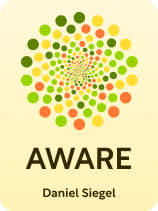

This article is an excerpt from the Shortform book guide to "Aware" by Daniel Siegel. Shortform has the world's best summaries and analyses of books you should be reading.
Like this article? Sign up for a free trial here.
Is your brain functioning at its best? Can you easily regulate your emotions and behaviors?
According to Dan Siegel, integration occurs when various regions of the brain establish effective connections and collaborate seamlessly. The Wheel meditation, a key practice in his approach, helps connect different brain regions.
Read on to discover how enhancing your brain’s integration improves your overall well-being.
Integrating Different Areas of Your Brain
According to Dan Siegel, integration between the different regions of your brain is facilitated by practicing the Wheel meditation. In general, integration is a process where you distinguish individual elements within a system and then organize and combine them into a cohesive whole. Integration thus balances differentiation with unification. For example, a city planner practices integration by differentiating individual elements of a neighborhood—houses, parks, and so on—while also establishing connections between them with roads and public spaces to create a functional community.
(Shortform note: The term integration is used in many contexts and connotes slightly different things, depending on context. In psychology, integration is used in a similar way to Siegel’s usage, but the American Psychological Association defines integration as a process of coordinating and unifying parts into a whole—it doesn’t include Siegel’s initial step of differentiating parts from a whole to then bring them back together later. In math, integration is when you find the total amount of something that changes over time or space, similar to calculating the total distance traveled on a journey by adding up all the small distances covered at each moment.)
Integration in your brain, called neural integration, happens when different areas of the brain connect and work together efficiently. This allows for coordinated mental processes and balanced functioning. Siegel explains that greater neural integration optimizes the functioning of your nervous system, which allows you to more easily regulate your attention, emotions, thoughts, and behaviors. When your nervous system is more regulated, your mind and body can be more flexible, adaptable, and resilient in the face of change, uncertainty, and stress.
(Shortform note: In neuroscience, neural integration is an umbrella term that encompasses many processes in the brain, including sensory history integration (SHI)— where your brain combines past sensory information to predict future sensory information. This predictive processing is key to how organisms adapt to their environments. According to neuroscientists, SHI is when your brain gathers and selects relevant historical data to create a cohesive representation of past experiences and generate expectations about upcoming events. The brain identifies patterns in sensory inputs over time, ultimately enabling adaptive behaviors in response to environmental changes.)
The Wheel meditation facilitates integration in your brain because it helps you distinguish your perceptions from your awareness and to connect to the larger systems of life of which we are all a part. For example, the first, second, and third sections of the Wheel help you notice the difference between your sensations, feelings, thoughts, and the part of yourself that’s observing them. And the fourth section of the Wheel helps you reestablish your sense of connection with others. With consistent practice over time, meditation can help your brain rewire itself so that it’s more integrated, leading to greater physical and mental well-being.
(Shortform note: In a scientific article, Siegel uses the term neural differentiation to describe the process of separating and identifying different aspects of your awareness—the first step in the process of integration. He explains that this is much like untangling intertwined threads, and it allows us to engage or disengage with different aspects of our minds more easily. Once we can distinguish these different elements of our consciousness, we can bring them back together more harmoniously. By learning to both separate and recombine the various aspects of our awareness, we can achieve a more balanced and flexible mental state.)

———End of Preview———
Like what you just read? Read the rest of the world's best book summary and analysis of Daniel Siegel's "Aware" at Shortform.
Here's what you'll find in our full Aware summary:
- The benefits of increasing your awareness of yourself and the world
- How to use a meditation tool called the Wheel of Awareness
- How the Wheel of Awareness improves your bodily functions






